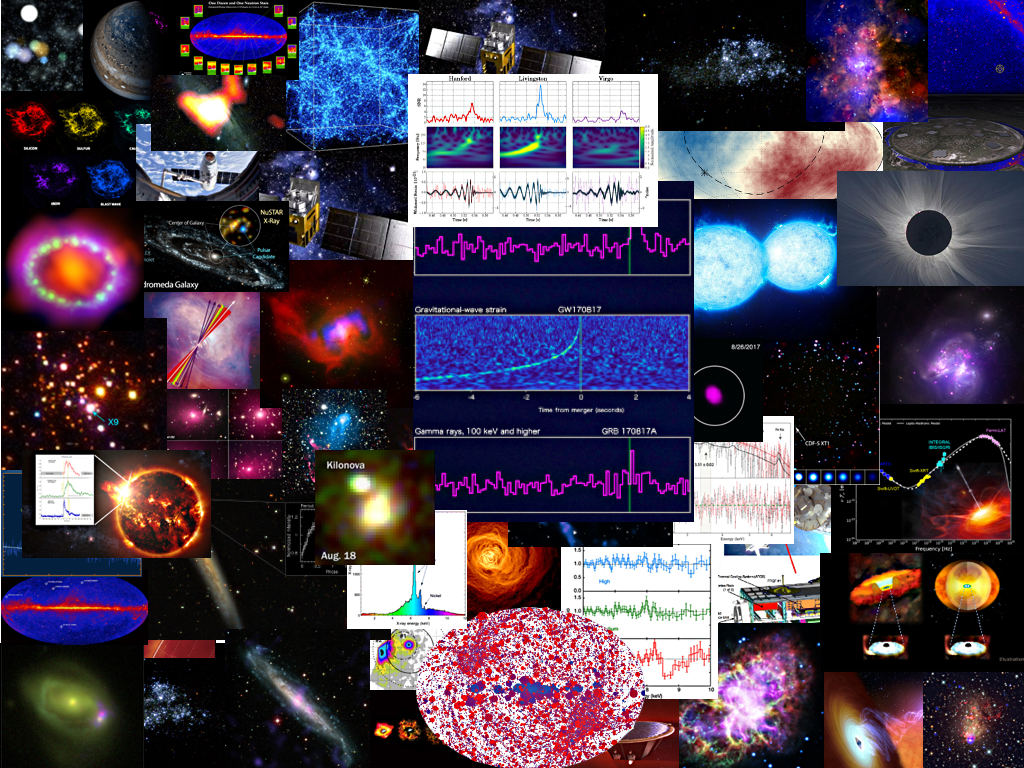
 Credit: NASA; NSF; DOE; JAXA; ESA; et al.
Credit: NASA; NSF; DOE; JAXA; ESA; et al.
The High Energy Year in Review: 2017
Of all the notable and important milestones of high-energy astrophysics in 2017, the year will be most known for a particular day, August 17. This was the day that the observed merger of two neutron stars in a galaxy far away ushered in a new era of "multi-messenger" astrophysics, an event seen through the emission of both electromagnetic and gravitational radiation. Gravitational radiation from this "blue kilonova" was seen by both LIGO telescopes and the new Virgo gravitational wave observatory, while the Gamma-ray emission from the blast was seen by the Fermi Gamma-ray Space Telescope and INTEGRAL, with UV and optical telescopes pinpointing the exact location of the merger. The evolution of the electromagnetic radiation from this event, from X-rays through radio emission is still being actively studied. In addition to this epochal event, 2017 also saw an enormous number of other scientific advances as well. This year saw the launch of NICER, a new X-ray timing instrument currently berthed on the International Space Station, along with the launch of Insight, a new X-ray space observatory launched by China. This year also saw the publication of high-resolution X-ray spectral data from the short-lived Hitomi observatory, astounding astronomers and making them eager for more. The year also marked the twentieth anniversary of SN 1987a, the brightest supernova in the past 400 years. This year was also notable for a solar eclipse, with darkness covering the US from west to east. Here's hoping that 2018 continues the march of progress and scientific truth.
Published: January 1, 2018
<
HEA Dictionary ● Archive
● Search HEAPOW
● Other Languages
● HEAPOW on Facebook
● Download all Images
● Education ● HEAD
>

Each week the HEASARC
brings you new, exciting and beautiful images from X-ray and Gamma ray
astronomy. Check back each week and be sure to check out the HEAPOW archive!
Page Author: Dr. Michael F. Corcoran
Last modified Monday, 26-Feb-2024 17:03:37 EST


